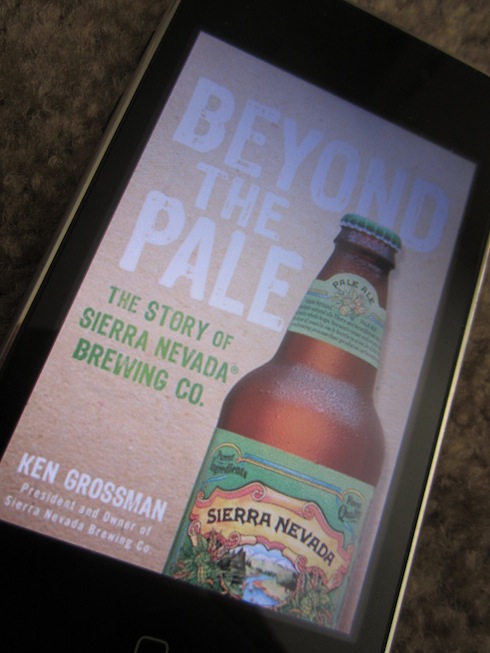
My Kindle started up and I dug into the Sierra Nevada story on the flight up to Portland from Burbank. And I was, to be honest, only intermittently enlightened. Even though I really wanted to like it more.
Starting with the story of Ken Grossman’s childhood and how he found his way to Chico, good back story as it was, moved a little slow and highlighted aspects of his work habits and expertise that get repeated later. And then when we got to the start of Sierra Nevada the details started to diminish. And as we got closer to current time, it became almost a press release touting the workplace at Sierra Nevada and their ecological efforts.
And that is why I can only marginally recommend Beyond the Pale. It is very important that all beer fans and writers see what it took for Grossman to make what we take for granted today. It was nip and tuck at many crucial junctures. The sheer amount of hours that Grossman put into the brewery building is tiring and amazing at the same time. We could easily be living in a world without the iconic green label of the famous pale ale. But that focus on the brewery getting off the ground trials comes at the expense of the beers. How did Kellerweis come about? Why was the stout overshadowed by the Pale ale? Why is Torpedo getting bigger and not the pale? As it stands, I got a peek into what makes a Sierra Nevada beer special but not the nitty gritty.
The section on the split between Grossman and his initial partner was also quite informative. Recapping that part of Sierra Nevada’s history must have been hard to do but it was handled adroitly without being mean spirited or too soft. And most importantly, it gave me the full (from Grossman’s perspective) story of what transpired.
But at other points in the narrative, I wanted to say, now talk about this or go in more depth about that. And instead it would head to another chapter on building the new facility or buying more equipment. More photographs may have enlivened those stretches of text (and perhaps the book-book has that as opposed to the Kindle version). I would also have shortened the childhood section and fleshed out who the other brewers have been at the brewery and what they brought to the table and how that has changed the beers brewed and the flagship ales. As it stands, you have a hybrid book that is part childhood memoir, part story of building a brewery and part brochure. None of which is bad, but the subject matter is so fascinating to me that I wanted more.
Now I have to read the story of Lagunitas in book form and compare with that and the Brooklyn Brewing and Dogfish Head stories.


